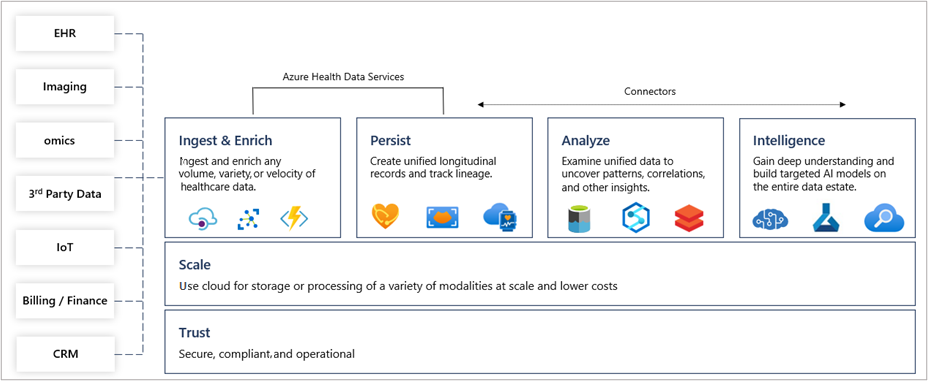Introduction
The healthcare industry is rapidly adopting Fast Healthcare Interoperability Resources (FHIR®) as the industry standard for storage and exchange of health data. FHIR® gives the industry a robust, extensible data model with standardized semantics and exchange protocols that enable all systems that use FHIR® to work together.
By transforming health data to FHIR®, organizations can quickly connect existing data sources, such as electronic health record systems (EHRs) or research databases. Microsoft Cloud for Healthcare brings together trusted capabilities to customers and partners that enhance patient engagement, empower health team collaboration, and improve clinical and operational data insights to improve decision-making and operational efficiencies. The data solutions within Microsoft Azure Health Data Services empower the capabilities of Microsoft Cloud for Healthcare, from Microsoft Azure, Microsoft Dynamics 365, Microsoft Power Platform, and Microsoft 365, to transform the healthcare journey through more secure and connected patient experiences.
This module covers the data architecture of FHIR® and the details of how the FHIR API is implemented in the FHIR service in Azure Health Data Services. As health data is transformed and consumed, some common patterns and structure emerge, as shown in the following figure.
First are the data sources. You unify this disparate collection of healthcare data on Azure by using Azure Health Data Services. Then, data from the various data sources is ingested and persisted. Next, the data is analyzed. Finally, intelligence is applied and helps you gain a deeper understanding of this data.
In this module, you'll:
Identify types of FHIR resources.
Identify resource elements, structures, and hierarchy.
Learn about the FHIR RESTful API framework.
